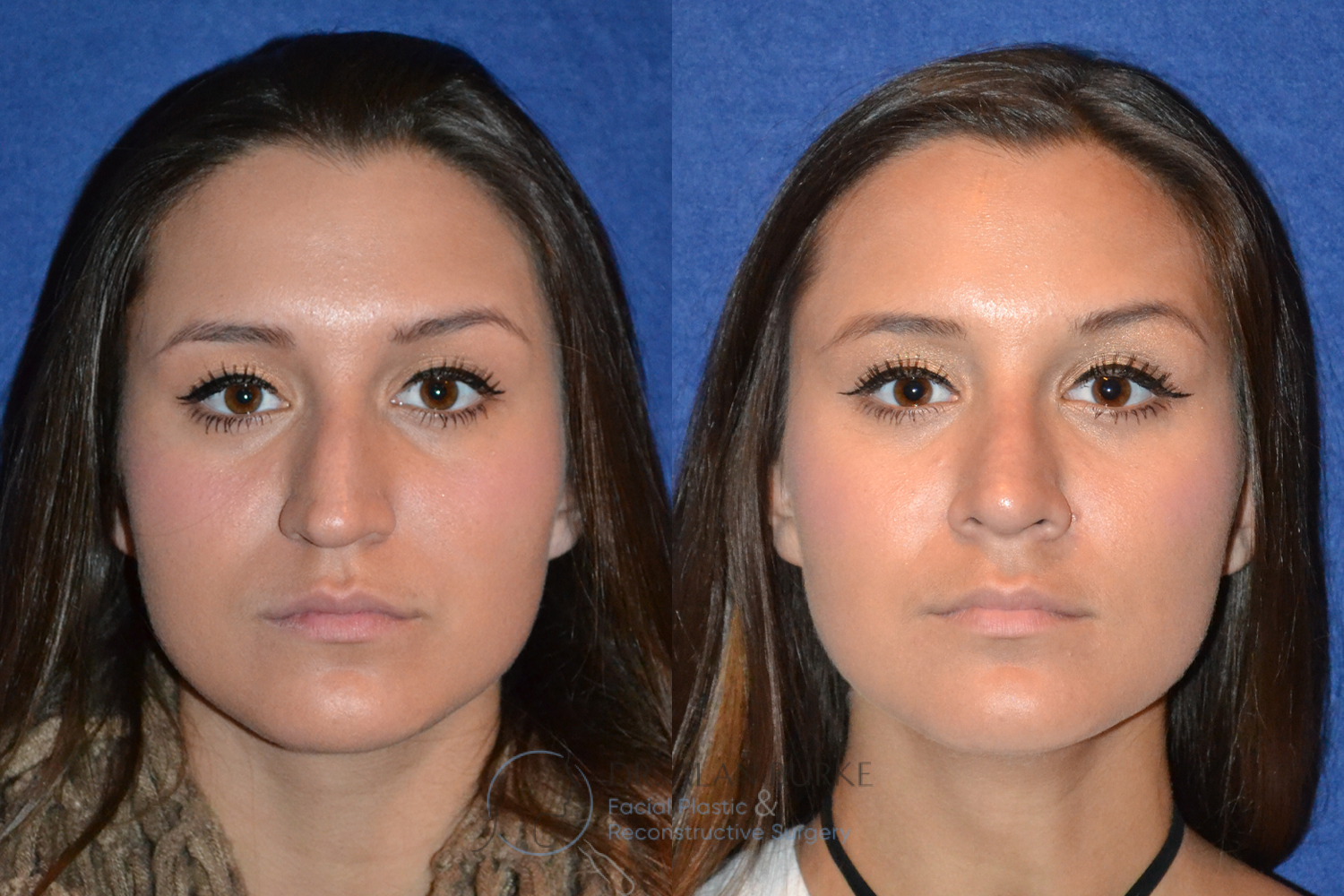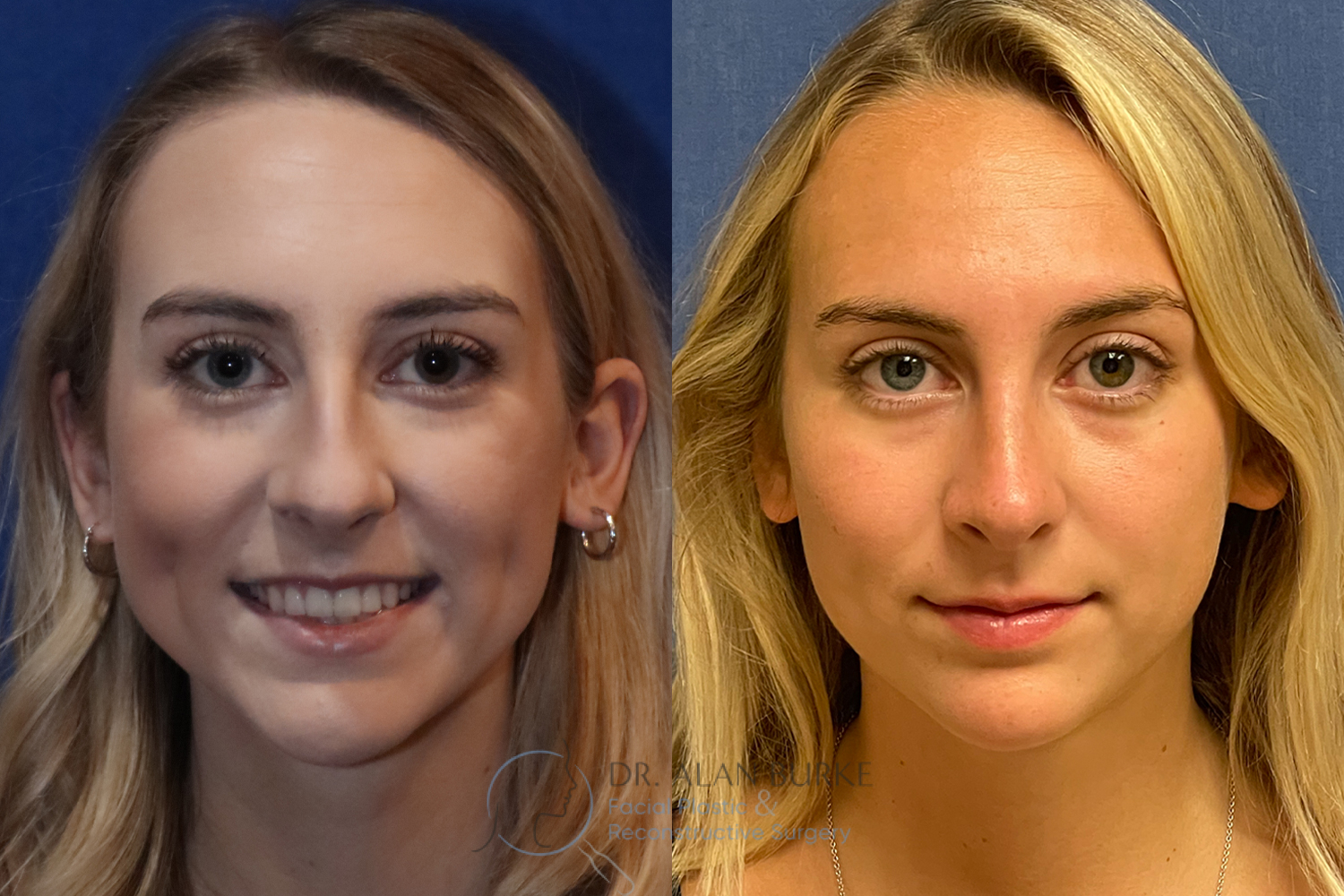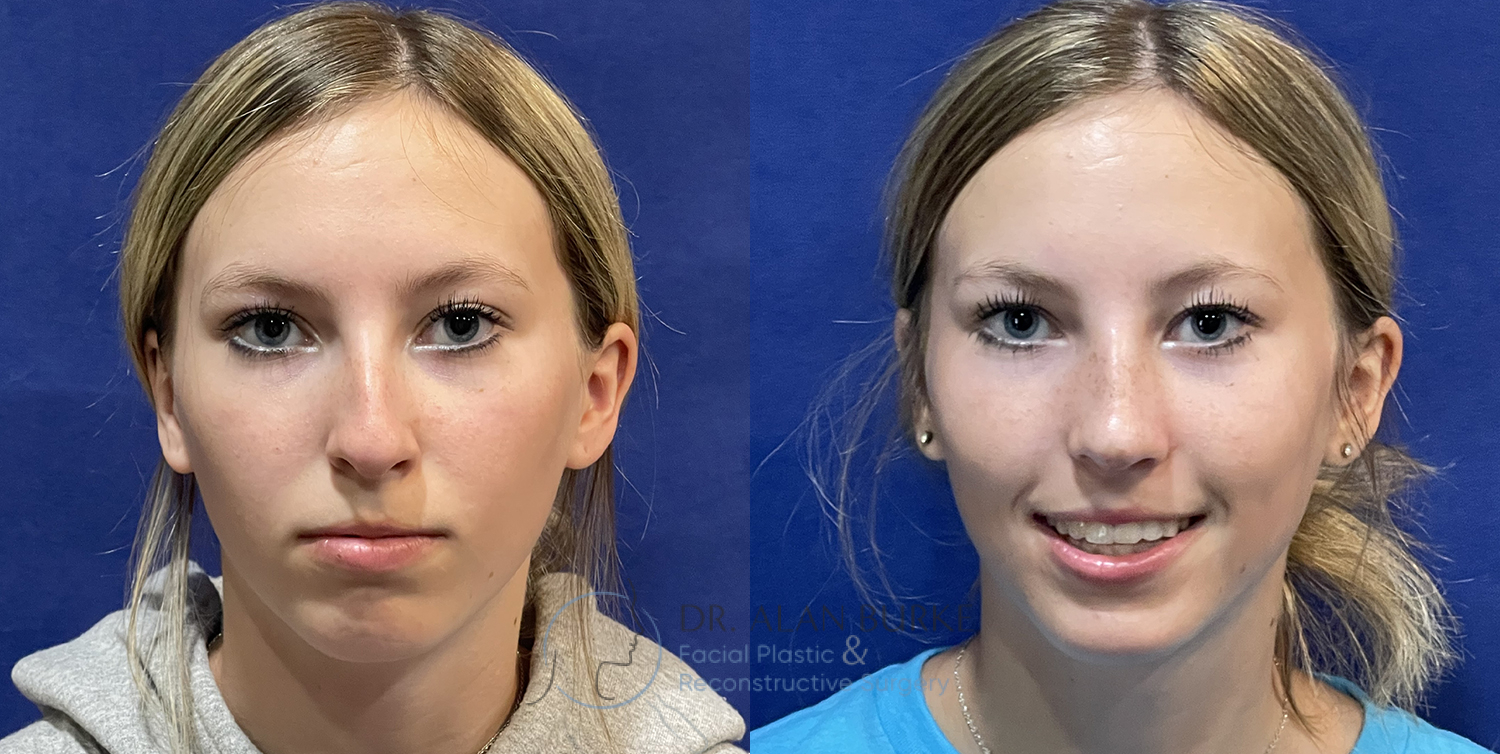Case Details
Crooked and Irregular Nasal
Tip Anatomy
Introduction
The descriptions of an irregular nose, crooked nose or twisted nose rarely do justice to what is going on. There may be surface asymmetry, or lopsidedness. The nose may point left or right. There can be “S”-shaped irregularities. Regardless, the fact that a nose’s irregularities garner attention may speak more to why a patient is bothered by it.
Psychologic studies have shown that the nose should really be a background facial feature. It becomes foreground if irregularities or unbalanced anatomy make a nose stand out. So if we can manufacture or restore balance, pleasing, proportional and symmetric nasal anatomy, the nose fades into the background somewhat, and a person’s other facial features take center stage, particularly the eyes. It is well recognized that if we can create a pleasing, proportional nose, then perceived facial attractiveness also rises. Let’s fix that nose!!!
Interview and Consultation
This gentleman had severe breathing problems related to a deviated nasal septum, not amenable to allergy management. We had set out to address his nasal airway at the minimum. His multiple sporting-related nasal traumas had also created crooked and irregular nasal anatomy. He was very much interested in restoring more natural nasal anatomy in the process of addressing his nasal airway. Additionally, he had a terrific headache problem, unsolved in origin and difficult to treat. These headaches actually could be labelled as migraines based on migraine questionnaires. They had started after his first nasal fracture.
Physical Examination
He had a classic nasal twist deformity, with the nose canted off to one side, related to both cartilaginous and bony deflection. On top of that, there were surface irregularities reflecting uneven and irregular underlying nasal structural anatomy. On forceful nasal inhalation, the nasal sidewalls collapsed, showing a dynamic nasal valve obstruction. This reflected the dislocated middle vault nasal cartilages (from the nasal bones) being somewhat flail, allowing the sidewalls to pinch with only moderate inspiration. Endonasally, or inside of his nose, the septum was warped, “S”-shaped obstructing perhaps 85% of the cross-sectional nasal airway. There was a spur, where the septal cartilage met the septal bone, buckling sideways, touching the nasal sidewall. I had him perform a “Decongestant Test”, using a nasal decongestant either when he felt the onset of a headache, or during a headache. He was able to demonstrate that he could abort his headache with this trick and nullify an actual headache.
Surgical Plan
First, the septal deviation needed to be taken care of, straightening both bony and cartilaginous crooked anatomy. The intention here was to restore the nasal airway, but also treat the trigger point spur that we felt was a potential culprit causing his headache problem.
Secondly, extended spreader grafts were utilized to recreate the nasal dome, but also as part of straightening his nose and addressing surface irregularities. The nasal tip was reshaped with suture techniques, recreating symmetry. Graft techniques were crucial here adding structural support and used for camouflage purpose, hiding hollows or
bossae (visible points or nubbins).
Postoperative Results
It is said amongst facial plastic surgeons that it can be harder to please the surgeon than it is to please the patient, at times. Well in this instance we were both very pleased. In cases like this, nobody would ever know that he had had a nasal surgery, there being no tell-tale suggestion of
a surgery. He had a natural-appearing, elegant, masculine nose, that breathed well, with no collapse. Additionally, his headache problem was solved. Vamos!
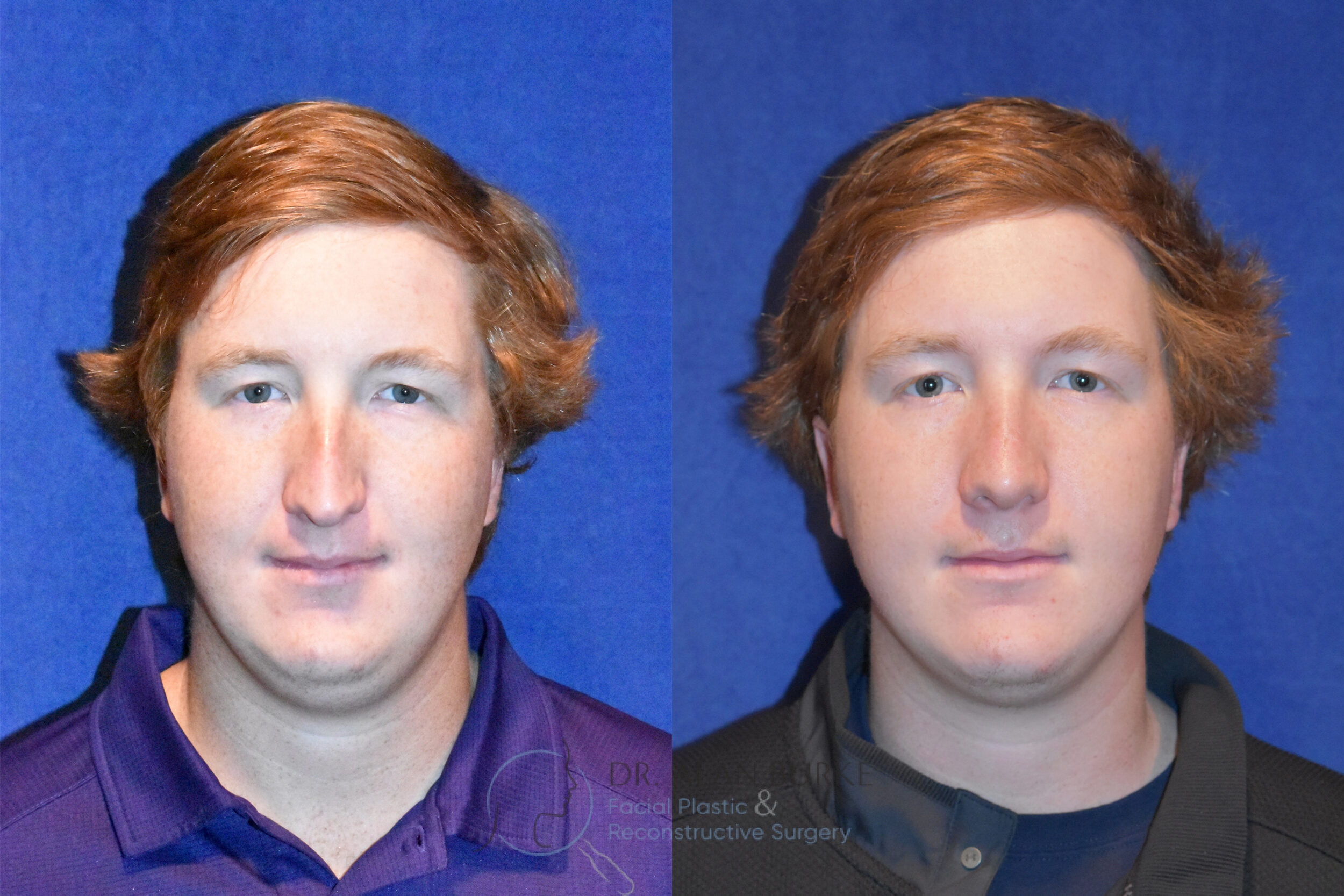
Before
After
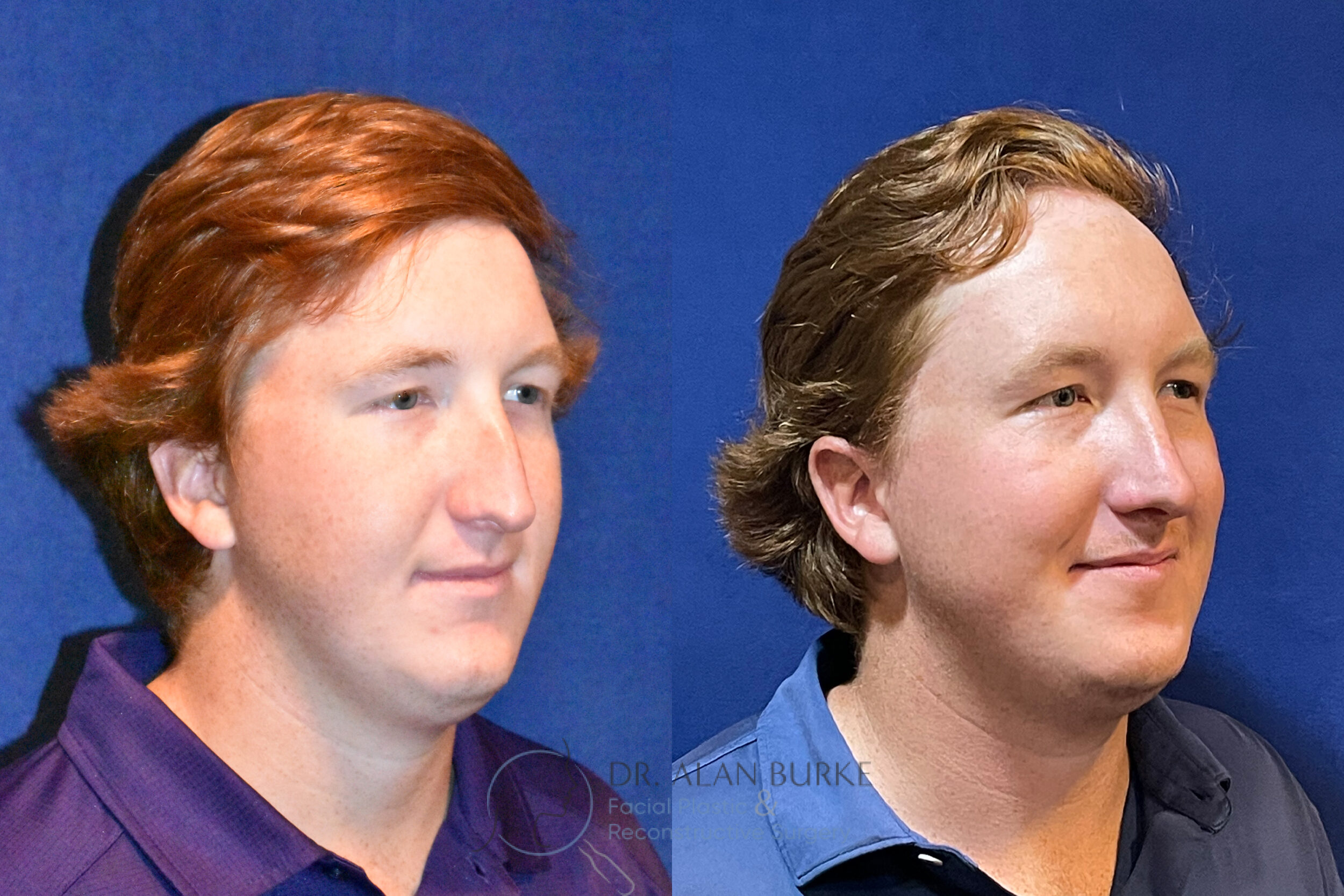
Before
After
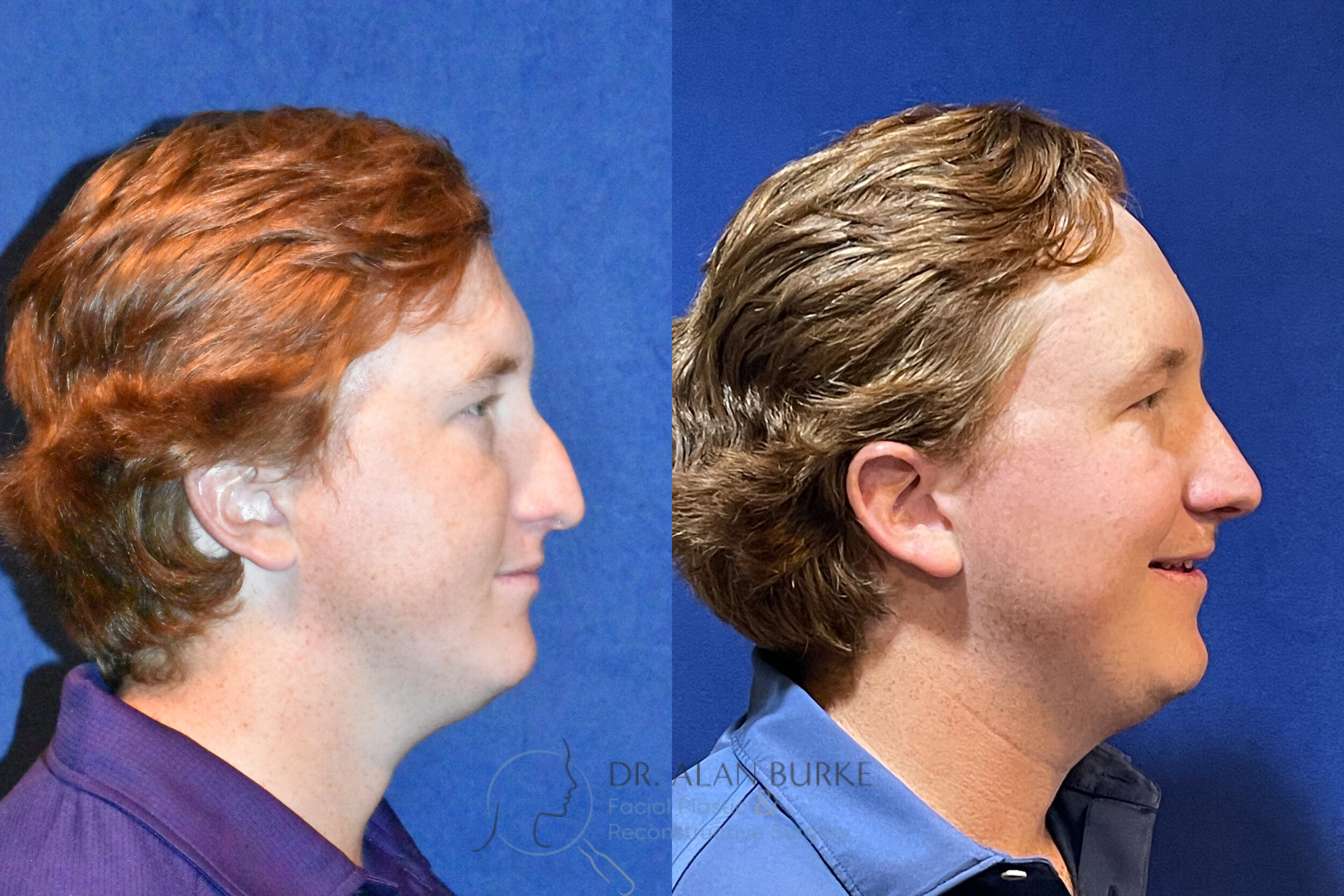
Before
After
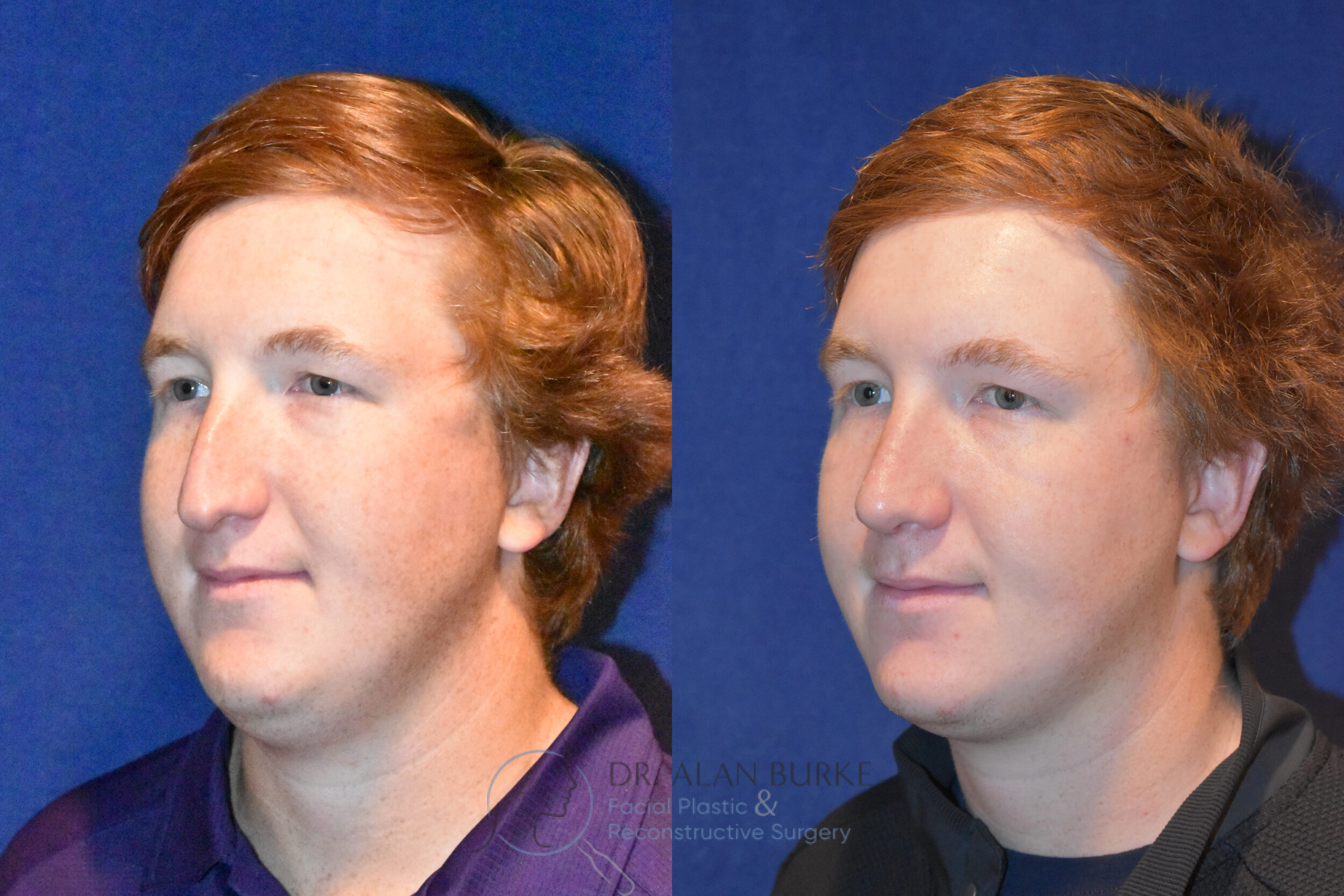
Before
After
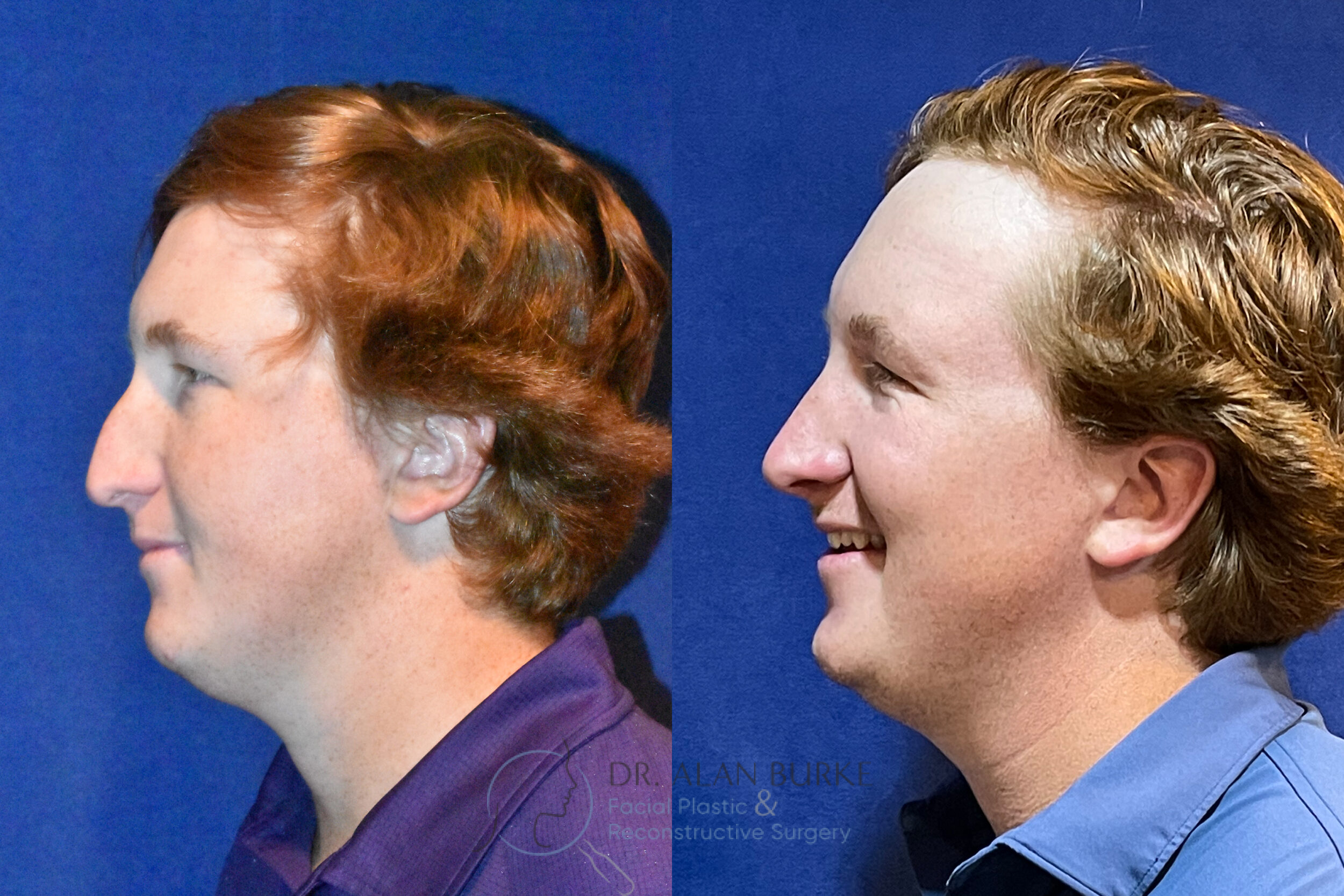
Before
After
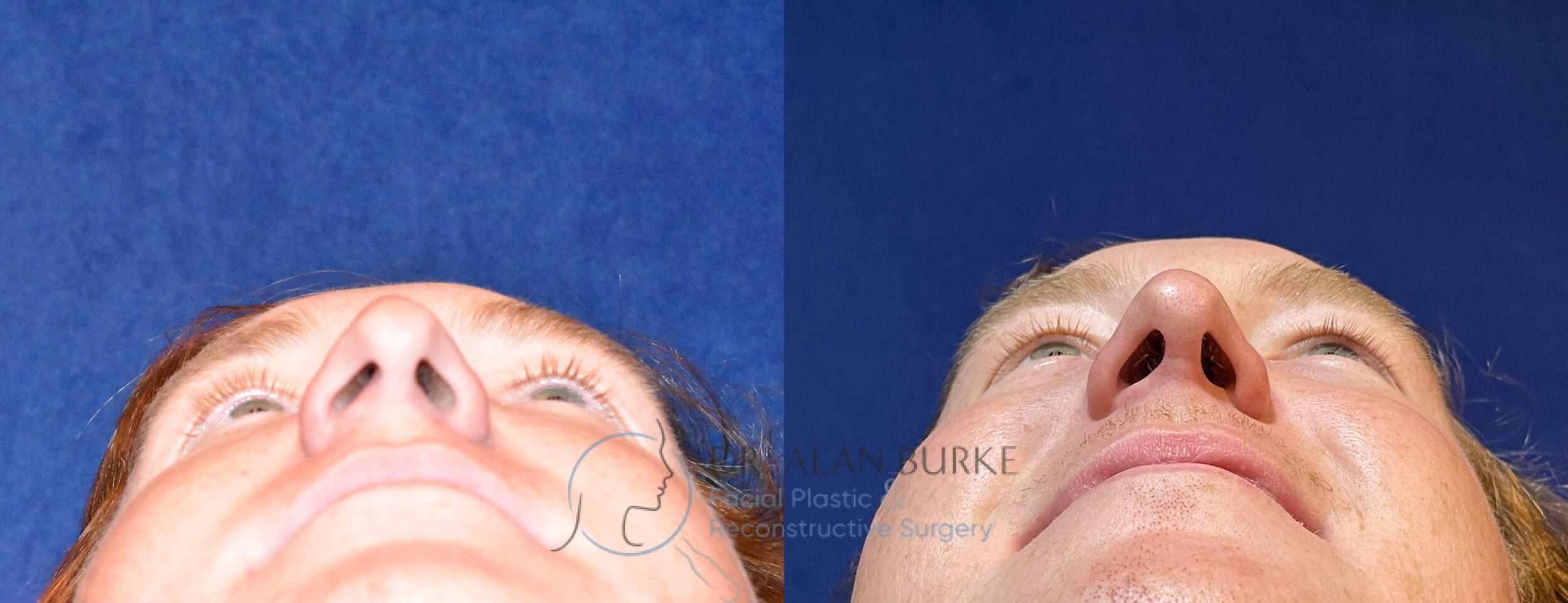
Before
After
